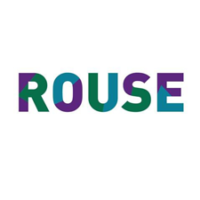Monthly Archives: August 2016
Change Management: “Making Change in Organisations Happen Effectively”
Change Management
“Making Change in Organisations Happen Effectively”
by Peter Roest | Managing Partner, August 1st, 2016
Change Management is a term that is used freely. Sometimes it’s a scapegoat for less than stellar results: “That initiative failed because we didn’t focus enough on Change Management.” And it’s often used as a catch-all for project activities that might otherwise get overlooked: “When we implement that new process, let’s not forget about the Change Management.”
It’s a noun: “Change Management is key to the project.”
It’s a verb: “We really need to change manage that process.”
It’s an adjective: “My Change Management skills are improving.”
It’s an expletive: “Change Management!”
But what ‘exactly’ is it? Change Management is in fact a structured approach for ensuring that changes are thoroughly and smoothly implemented, and that the lasting benefits of change are achieved. Change Management is a broad discipline that involves ensuring change is implemented smoothly and with lasting benefits, by considering its wider impact on the organisation, the people within it and the broader stakeholder group outside of it. Each change initiative you manage or encounter will have its own unique set of objectives and activities, all of which must be coordinated.
When engaged as Business Change Managers, our role is to ease the journey towards new ways of working for our Clients. In addition to the ‘hands-on’ Change Management and Leadership skills that our Associates have gained by virtue of their ‘real-life’ work experience they do deploy a variety of common tools and methodologies to manage change effectively across the 4 key areas in a typical Change Management program:
* Understanding Change
* Planning Change
* Implementing Change
* Communicating Change
These tools include, but are not limited to: The Change Curve, Lewin’s Change Management Model, McKinsey’s 7S Framework, SIPOC diagrams, Kotter’s 8-Step Change Model, Stakeholder Analysis and Stakeholder Management – and more specifically in relation to Associates who have specialised in Human Capital Management common Organisation Design methodologies and structures are used to help organisations design their Organisational Structures to align with Business Goals.
Accelerate Evolution team members have successfully been engaged, both as SME’s as well as in leadership roles, in a multitude of Change Management programs on behalf of our clients and during their working careers before that. A selection of notable assignments include:
Providing Change Management Leadership during a complex office relocation and consolidation project for a large multinational insurance company involving various internal and external stakeholder groups.
Providing Change Management SME Support as well as Leadership on a multitude of new client implementation projects in a 3PL contract logistics environment – both on the Client as well as on the 3rd Party Logistics Service Provider side.
Providing Change Management Leadership during a large-scale multifaceted global end-to-end supply chain transformation project for a leading multinational pharmaceutical organisation.
Providing Change Management SME Support during a complex SAP implementation at a leading business conglomerate in the Middle East – 3,000+ users across multiple businesses in a variety of geographies.
If you are interested to learn more please contact us to find out more about how we can best help your organisation Understand, Plan, Implement and Communicate Change, internally and externally, by developing and deploying an effective Change Management program.
Popular Tags
- business operations management change management coaching & training commercial operations management Finance & GRC GEIT human capital management Information Technology interim management IT Governance Legal management advisory Marketing & Positioning project management Regulatory strategy & business transformation supply chain & logistics



























